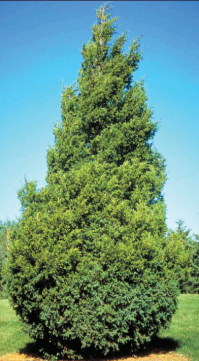
by Sheila Dunning | Dec 19, 2018
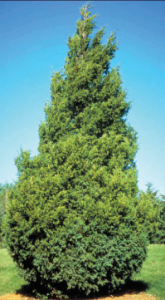 Throughout history the evergreen tree has been a symbol of life. “Not only green when summer’s here, but also when it’s cold and dreary” as the Christmas carol “O Tannenbaum” says. After such devastating tree losses in the Panhandle this year, this winter is a prime time for installing more native evergreens.
Throughout history the evergreen tree has been a symbol of life. “Not only green when summer’s here, but also when it’s cold and dreary” as the Christmas carol “O Tannenbaum” says. After such devastating tree losses in the Panhandle this year, this winter is a prime time for installing more native evergreens.
While supporting the cut Christmas tree industry does create jobs and puts money into local economics, every few years considering adding to the urban forest by purchasing a living tree. Native evergreen trees such as Redcedar make a nice Christmas tree that can be planted following the holidays. The dense growth and attractive foliage make Redcedar a favorite for windbreaks, screens and wildlife cover. The heavy berry production provides a favorite food source for migrating Cedar Waxwing birds. Its high salt-tolerance makes it ideal for coastal locations. Their natural pyramidal-shape creates the traditional Christmas tree form, but can be easily pruned as a street tree.
Two species, Juniperus virginiana and Juniperus silicicola are native to Northwest Florida. Many botanists do not separate the two, but as they mature, Juniperus silicicola takes on a softer, more informal look. For those interested in creating a different look, maybe a Holly (Ilex,sp.) or Magnolia with full-to-the-ground branches could be your Christmas tree.
When planning for using a live Christmas tree there are a few things to consider. The tree needs sunlight, so restrict its inside time to less than a week. Make sure there is a catch basin for water under the tree, but never allow water to remain in the tray and don’t add fertilizer. Locate your tree in the coolest part of the room and away from heating ducts and fireplaces. After Christmas, install the new tree in an open, sunny part of the yard. After a few years you will be able to admire the living fence with all the wonderful memories of many years of holiday celebrations. Don’t forget to watch for the Cedar Waxwings in the Redcedar.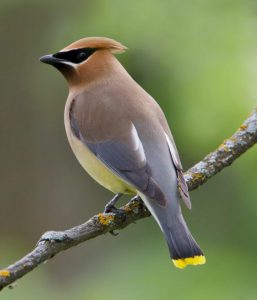
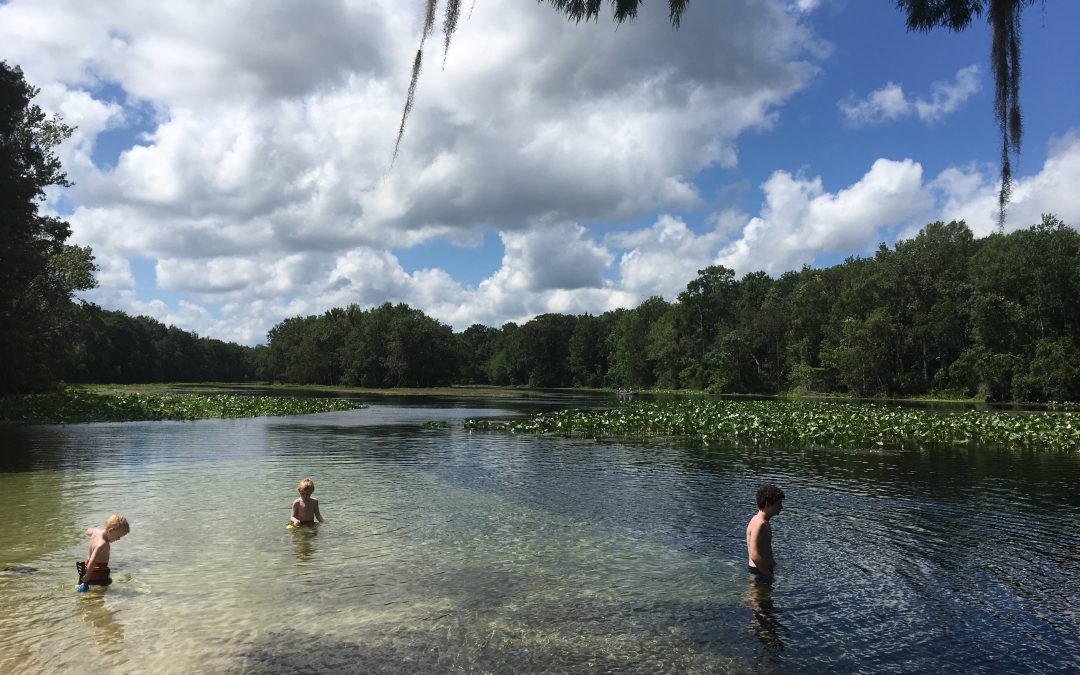
by Les Harrison | Sep 28, 2018
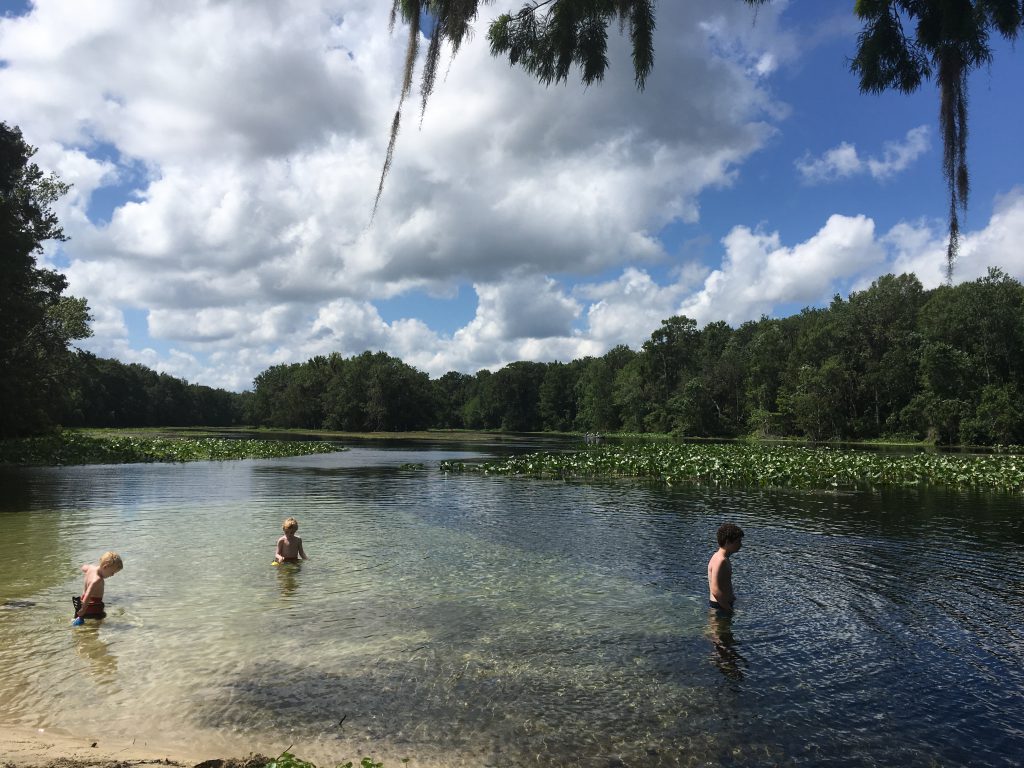
The Wacissa River offers paddlers the opportunity to see north Florida unfiltered.
Being off the beaten path has many advantages. In the case of a spring-fed river, it translates to less pressure from human use and a great opportunity for those who do visit to experience the “real Florida”.
The Wacissa River, located in the southern half of Jefferson County, Florida, is near the crossroads identified as the town of Wacissa. There is a blinking light, a post office, and two small convenience stores where beer, ice and snacks can be purchased.
Access to the river is about two miles south of the blinking light on Florida 59, just after the state road veers to the southwest. The blacktop spur quickly become a dirt parking lot after passing several canoe and kayak rental businesses.
A county maintained boat landing with pick-nic tables, a manmade beach, and a tiny diving platform with a rope swing are the only signs of civilization. The cold, clear water extends to a tree line several hundred yards south of the landing with the river moving to the southeast.
The river emerges crystal clear from multiple limestone springs along the first mile and a half of the 12 mile waterway. The adjacent land is flat and subject to being swampy, especially in wet years like 2018.
The river terrain stands in contrast to the Cody Scarp just a few miles to the north. This geologic feature is the remnants of an ancient marine terrace and is hilly, rising 100 feet above the river in some spots.
Cypress, oak, pine, and other trees cover the bottomlands adjacent to the river. The river quickly enters the Aucilla Wildlife Management Area which results in a wide variety of animals, birds, amphibians and reptiles.
The wildlife viewing varies by season. Many migratory birds use the river’s shelter and resources on their annual trips.
Canoeing and kayaking are popular in the gentle current. Powerboats and fan boats can use the area also, but must be on constant alert for shallow spots and hidden snags.
For the adventurous paddler who wants to follow the river’s course, there is a debarkation point at Goose Pasture Campgrounds and another near St. Marks after the Wacissa merges with the Aucilla.
Be prepared when taking this journey. This is the real Florida, no fast food restaurants or convenience stores. Only clear water, big trees and the calls of birds will be found here.
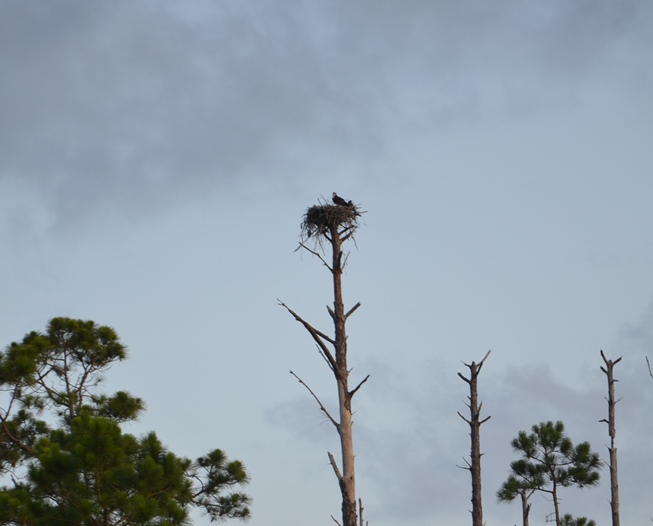
by Rick O'Connor | Aug 17, 2018
As a kid growing up here along the Gulf Coast, I had never heard of an osprey. Now, there is at least one mating pair on almost every body of water in the Pensacola Bay area. Where did this once unknown bird come from? How has it successfully colonized our coastal waterways?
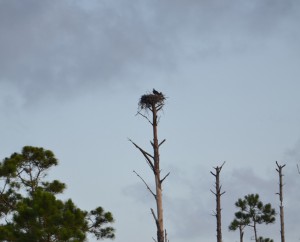
Osprey nesting sites are commonly near water, and their food source.
The osprey, like many other fish eating birds, was a victim of the DDT story. This miracle pesticide was developed to battle insects attacking food crops but was found to be useful against mosquitos and many other unwanted pests. It was sprayed everywhere using planes, trucks, and tractors. With an extremely long half-life, wherever it landed it was going to be around for a while – it can still be found in the sediments of the Pensacola Bay System. It was one of those compounds that was difficult to excrete through an organisms excretory system – thus it accumulated within their tissues, and as organisms fed on other organisms, it was passed up the food chain – bioaccumulation. Birds of prey who fed on fish would accumulate DDT as well. It caused the shells of their eggs to become thinner – so nesting was not successful – and many of the aquatic birds of prey (pelicans and eagles alike) declined in number. DDT was banned in 1970s and many of these fish eating birds have made a remarkable recovery – a true success story.
So who is this fish eating bird of prey that can be found on dead trees and light posts all over the bay area?
Ospreys (Pandion haliaetus) are members of the family Accipitridae – the hawks and eagles.
They are predators with hooked bills and sharp talons to grab and dispose of prey. Ospreys can be identified by the hawk like silhouette hovering over a local waterway searching for fish – their primary food. They are usually in pairs and, at times, the young are hovering nearby. Their call is a high pitch chirping sound and if seen on a tree, or on their nest, they are brown on top and white beneath. These birds are common along both fresh and saltwater bodies of water.
Ospreys prefer waterways where fish are plentiful. For more successful hunting, they like waters that are relatively shallow and nesting locations that protect the young from mammalian predators. Many local osprey prefer large dead trees for their nests, and will often use manmade structures – such as power poles, navigation markers, and special platforms on poles placed there for the purpose of osprey nesting.
Osprey feed almost exclusively on fish. They are unique in the hawk world in that their talons can adjust so that the captured fish can be turned parallel to the osprey’s body – making it more aerodynamic when returning to the nest. Hunting osprey hover over the water searching and then dive, talons first into the water. They can only reach depths of about three feet so they typically hunt for surface schooling fish, or in shallow waters. Most of their captures are between 8-10 inches and include such fish as speckled trout, mullet, and catfish.
These birds are monogamous (mating pairs breed for life). During the breeding season, the male will collect sticks for the construction of their large nests. Bringing them back to the female, she will begin to arrange and construct the nest. The male provides seagrass and flotsam for the inner lining. There is a pre-courtship dance where the returning male flies over the nest with a fish. The pair produce between 3-4 eggs. Both parents will incubate the eggs but the female does the lions share. She will incubate while the male hunts. Returning with a fish for her, she will fly to a nearby branch to feed while he incubates the eggs – though they have seen the males incubate even without feeding the female. Evening incubation is always the female.
After hatching, the male will bring food to both the female and young. She does not leave the young at all for about 14 days. Afterwards, they will be left alone for periods of time, and are usually fledged by 50 days. Data shows that young fledglings rarely disperse more than 30 miles from the nest they hatched from – suggesting slow dispersal of this species. The mating pair will return to the same location for nesting every year for up to 30 years.
There are few predators of osprey due to their nesting habits. In some locations, where they nest on the ground, coyotes have been a problem. Locally, bald eagles are known to try to grab hatchlings and, occasionally, adults. There have been reports of crocodiles taking adults from the water in South Africa; this may be the case in South America as well, but no reports of American Alligators doing the same.
This is now a common bird along our shores and is a true conservation success story.
References
National Audubon Society Field Guide to North American Birds; Eastern Region. Ed. J. Bull, J. Farrand Jr. pp. 795.
Osprey. Neotropical Birds. Cornell Lab of Ornithology. https://neotropical.birds.cornell.edu/Species-Account/nb/species/osprey/overview.
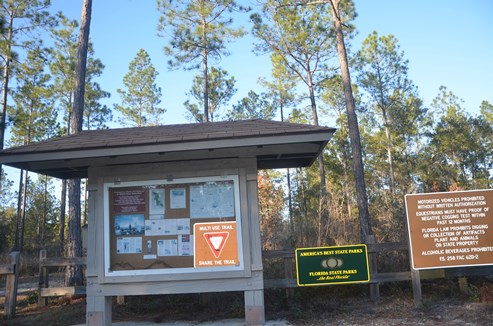
by Les Harrison | Jan 5, 2018

St. Marks River Preserve State Park is still being developed, but open for native habitat enthusiast and those who enjoy this environment as nature established it.
Located along the banks of the St. Marks River’s headwaters, this park offers an extensive system of trails for hiking, horseback riding, and off-road bicycling. The existing road network in the park takes visitors through upland pine forests, hardwood thickets and natural plant communities along the northern banks of the river.
The St. Marks River is not navigable within the park boundaries. It is not conducive to canoeing or kayaking unless visitors are willing to accept long portages through thick undergrowth.
Most of the trails are dry and sandy, but plan for the low water crossings which some of the trails traverse. The rainy months of summer increase the prospects of water crossings.
This preserve is home to a wide variety of native fauna including black bear, deer, turkey and much more. Wildlife tracks frequently crisscross the park’s roads and trails.
At the northern end of the park two sections have had timber removed. One plot has been replanted with wiregrass seed which should germinate this year. Both areas have been planted with long-leafed pine seedlings.
This preserve offers avian aficionados the opportunity to witness nature at its finest as birds fill the air with their calls. A wide assortment of residential and migratory birds can be viewed in their natural habitat.
There are currently no amenities available at the park and it does not have restroom facilities. Additionally, visitors must bring in water for themselves or their horse.
There are no fees presently required to enjoy this gem of a park. Located east of Tallahassee, it is 3.5 miles east of W.W. Kelly Road on Tram Rd (Leon County Highway 259) almost to the Jefferson County line.
Adequate planning should be made to pack in and pack out all needed items for the day. The nearest convenience stores are located in Wacissa a few miles west of the park on Tram Road.
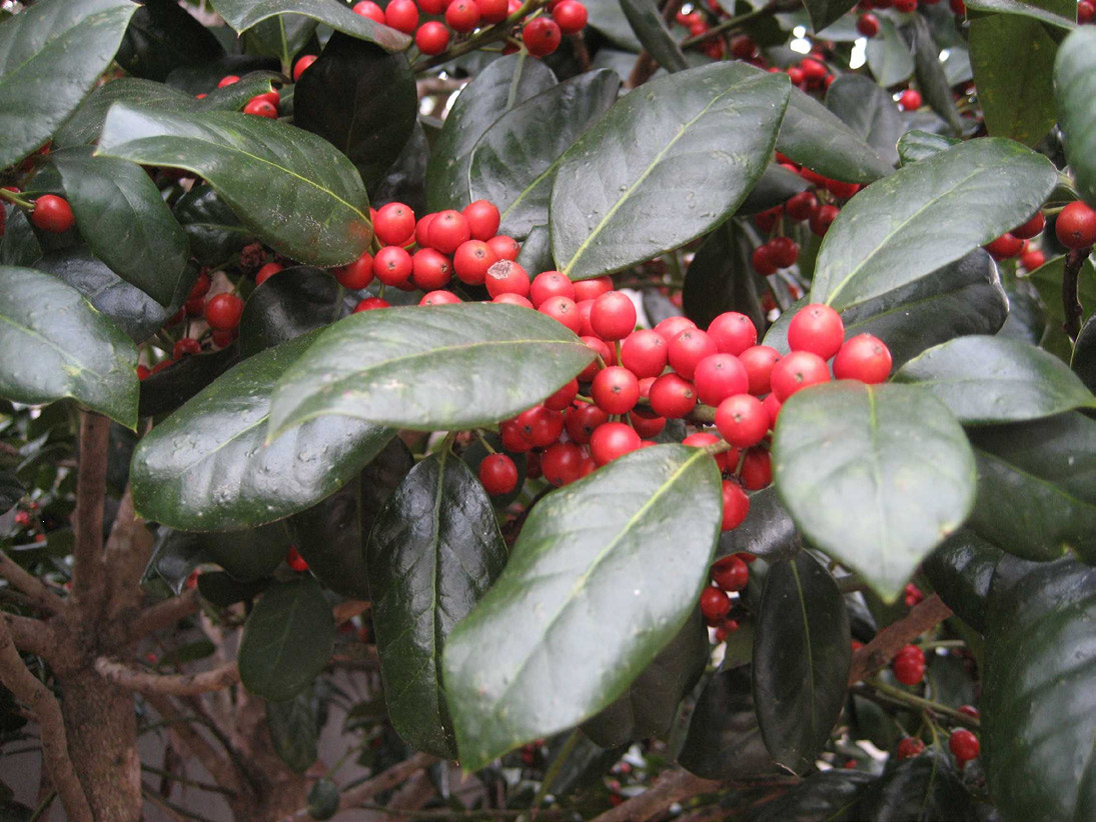
by Sheila Dunning | Dec 15, 2017
According to Druid lore, hanging the plant in homes would bring good luck and protection. Holly was considered sacred because it remained green and strong with brightly colored red berries no matter how harsh the winter. Most other plants would wilt and die.
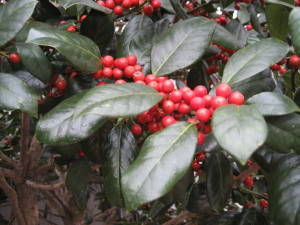 Later, Christians adopted the holly tradition from Druid practices and developed symbolism to reflect Christian beliefs. Today, the red berries are said to represent the blood that Jesus shed on the cross when he was crucified. Additionally, the pointed leaves of the holly symbolize the crown of thorns Jesus wore on his head.
Later, Christians adopted the holly tradition from Druid practices and developed symbolism to reflect Christian beliefs. Today, the red berries are said to represent the blood that Jesus shed on the cross when he was crucified. Additionally, the pointed leaves of the holly symbolize the crown of thorns Jesus wore on his head.
Several hollies are native to Florida. Many more are cultivated varieties commonly used as landscape plants. Hollies (Ilex spp.) are generally low maintenance plants that come in a diversity of sizes, forms and textures, ranging from large trees to dwarf shrubs.
The berries provide a valuable winter food source for migratory birds. However, the berries only form on female plants. Hollies are dioecious plants, meaning male and female flowers are located on separate plants. Both male and female hollies produce small white blooms in the spring. Bees are the primary pollinators, carrying pollen from the male hollies 1.5 to 2 miles, so it is not necessary to have a male plant in the same landscape.
Several male hollies are grown for their compact formal shape and interesting new foliage color. Dwarf Yaupon Hollies (Ilex vomitoria ‘Shillings’ and ‘Bordeaux’) form symmetrical spheres without extensive pruning. ‘Bordeaux’ Yaupon has maroon-colored new growth. Neither cultivar has berries.
Hollies prefer to grow in partial shade but will do well in full sun if provided adequate irrigation. Most species prefer well-drained, slightly acidic soils. However, Dahoon holly (Ilex cassine) and Gallberry (Ilex glabra) naturally occurs in wetland areas and can be planted on wetter sites.
Evergreen trees retain leaves throughout the year and provide wind protection. The choice of one type of holly or another will largely depend on prevailing environmental conditions and windbreak purposes. If, for example, winds associated with storms or natural climatic variability occur in winter, then a larger leaved plant might be required.
The natives are likely to be better adapted to local climate, soil, pest and disease conditions and over a broader range of conditions. Nevertheless, non-natives may be desirable for many attributes such as height, growth rate and texture but should not reproduce and spread beyond the area planted or they may become problematic because of invasiveness.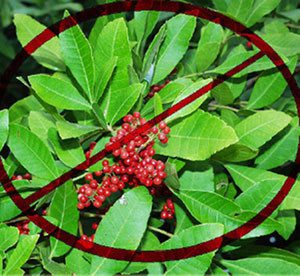
There is increasing awareness of invasiveness, i.e., the potential for an introduced species to establish itself or become “naturalized” in an ecological community and even become a dominant plant that replaces native species. Tree and shrub species can become invasive if they aggressively proliferate beyond the windbreak. At first glance, Brazilian pepper (Schinus terebinthifolius), a fast-growing, non-native shrub that has a dense crown, might be considered an appropriate red berry producing species. However, it readily spreads seed disbursed by birds and has invaded many natural ecosystems. Therefore, the Florida Department of Environmental Protection has declared it illegal to plant this tree in Florida without a special permit. Consult the Florida Exotic Pest Plant Council’s Web page (www.fleppc.org) for a list of prohibited species in Florida.
For a more comprehensive list of holly varieties and their individual growth habits refer to ENH42 Hollies at a Glance: http://edis.ifas.ufl.edu/mg021
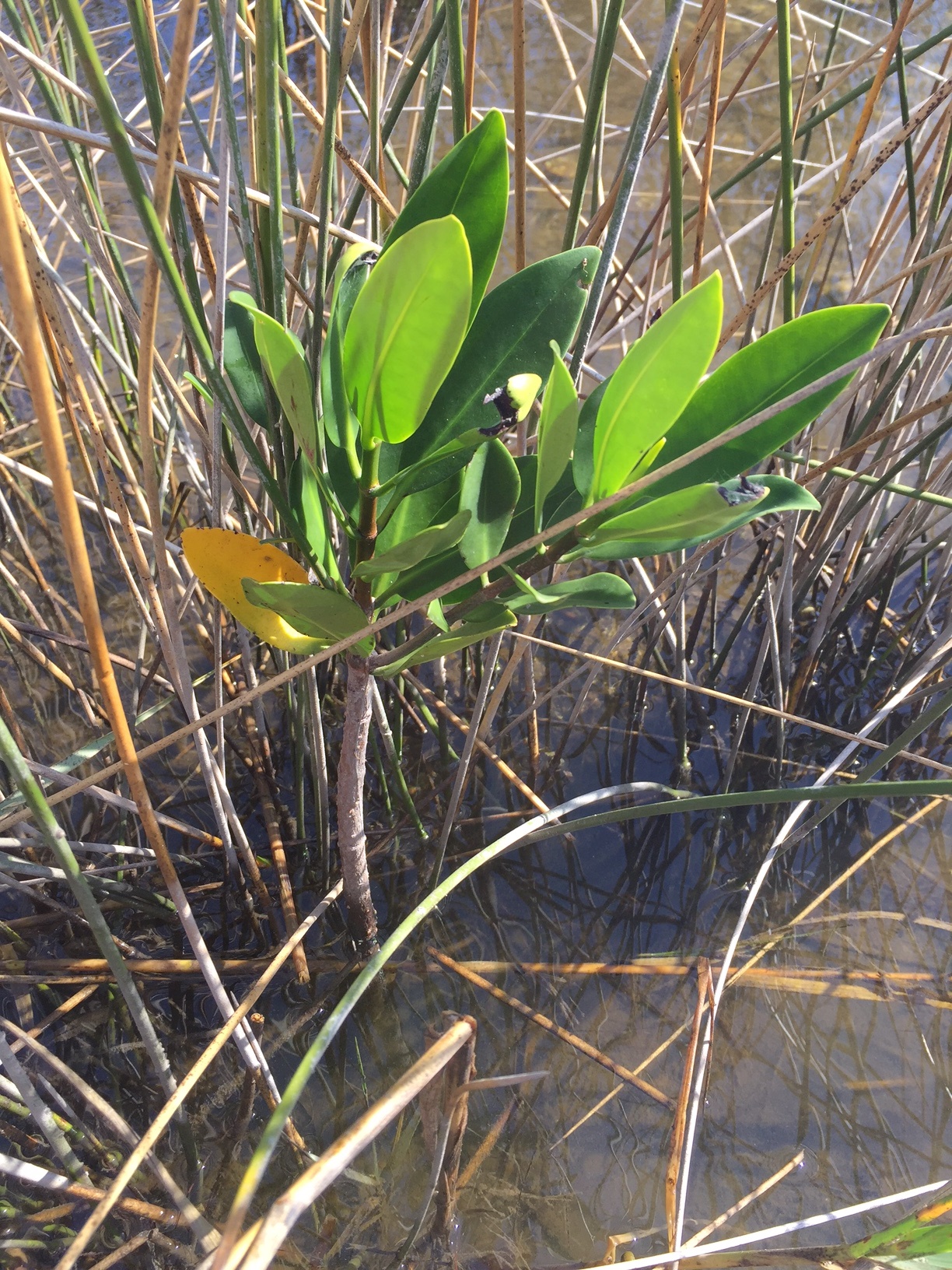
by Carrie Stevenson | Nov 3, 2017
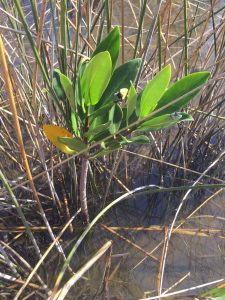
Red mangrove growing among black needlerush in Perdido Key. Photo credit: Carrie Stevenson, UF IFAS Extension
Discovering something new is possibly the most exciting thing a field biologist can do. As students, budding biologists imagine coming across something no one else has ever noticed before, maybe even getting the opportunity to name a new bird, fish, or plant after themselves.
Well, here in Pensacola, we are discovering something that, while already named and common in other places, is extraordinarily rare for us. What we have found are red mangroves. Mangroves are small to medium-sized trees that grow in brackish coastal marshes. There are three common kinds of mangroves, black (Avicennia germinans), white (Laguncularia racemosa), and red (Rhizophora mangle).
Black mangroves are typically the northernmost dwelling species, as they can tolerate occasional freezes. They have maintained a large population in south Louisiana’s Chandeleur Islands for many years. White and red mangroves, however, typically thrive in climates that are warmer year-round—think of a latitude near Cedar Key and south. The unique prop roots of a red mangrove (often called a “walking tree”) jut out of the water, forming a thick mat of difficult-to-walk-through habitat for coastal fish, birds, and mammals. In tropical and semi-tropical locations, they form a highly productive ecosystem for estuarine fish and invertebrates, including sea urchins, oysters, mangrove and mud crabs, snapper, snook, and shrimp.
Interestingly, botanists and ecologists have been observing an expansion in range for all mangroves in the past few years. A study published 3 years ago (Cavanaugh, 2014) documented mangroves moving north along a stretch of coastline near St. Augustine. There, the mangrove population doubled between 1984-2011. The working theory behind this expansion (observed worldwide) is not necessarily warming average temperatures, but fewer hard freezes in the winter. The handful of red mangroves we have identified in the Perdido Key area have been living among the needlerush and cordgrass-dominated salt marsh quite happily for at least a full year.
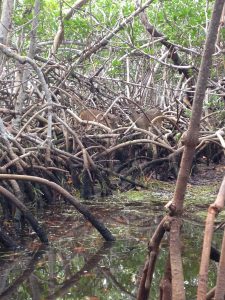
Key deer thrive in mangrove forests in south Florida. Photo credit: Carrie Stevenson, UF IFAS Extension
Two researchers from Dauphin Island Sea Lab are planning to expand a study published in 2014 to determine the extent of mangrove expansion in the northern Gulf Coast. After observing black mangroves growing on barrier islands in Mississippi and Alabama, we are working with them to start a citizen science initiative that may help locate more mangroves in the Florida panhandle.
So what does all of this mean? Are mangroves taking over our salt marshes? Where did they come from? Are they going to outcompete our salt marshes by shading them out, as they have elsewhere? Will this change the food web within the marshes? Will we start getting roseate spoonbills and frigate birds nesting in north Florida? Is this a fluke due to a single warm winter, and they will die off when we get a freeze below 25° F in January? These are the questions we, and our fellow ecologists, will be asking and researching. What we do know is that red mangrove propagules (seed pods) have been floating up to north Florida for many years, but never had the right conditions to take root and thrive. Mangroves are native, beneficial plants that stabilize and protect coastlines from storms and erosion and provide valuable food and habitat for wildlife. Only time will tell if they will become commonplace in our area.
If you are curious about mangroves or interested in volunteering as an observer for the upcoming study, please contact me at ctsteven@ufl.edu. We enjoy hearing from our readers.

 Throughout history the evergreen tree has been a symbol of life. “Not only green when summer’s here, but also when it’s cold and dreary” as the Christmas carol “O Tannenbaum” says. After such devastating tree losses in the Panhandle this year, this winter is a prime time for installing more native evergreens.
Throughout history the evergreen tree has been a symbol of life. “Not only green when summer’s here, but also when it’s cold and dreary” as the Christmas carol “O Tannenbaum” says. After such devastating tree losses in the Panhandle this year, this winter is a prime time for installing more native evergreens.











